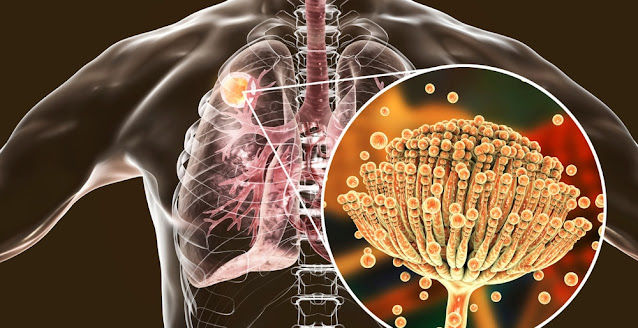Aspergillosis treatment involves taking an antifungal medication for several weeks
The most common type of aspergillosis infection is invasive
pulmonary aspergillosis, which is treated with antifungal drugs. Although Vfend
(voriconazole) is the preferred treatment, isavuconazole and posaconazole have
comparable efficacy with less toxicity. If antifungals are ineffective, amphotericin
B is another option.Combination therapy is used in cases of severe immunosuppression
and widespread infection. All antifungal medications have the potential for
serious side effects, including kidney and liver damage.
Aspergillosis
treatment is a group of diseases caused by the aspergillus fungus.
Aspergillus is a fungus with airborne spores that does not normally cause illness.
Individuals with compromised lungs, a sensitive immune system, and allergies
are more vulnerable to Aspergillus infection. Invasive Aspergillosis,
non-invasive Allergic Pulmonary Aspergillosis (ABPA), and Chronic Pulmonary and
Aspergilloma are all examples of Aspergillus infections (CPA). Invasive
aspergillosis is uncommon and mostly affects immunocompromised people.
Rare lung disease called chronic pulmonary aspergillosis
exacerbates the symptoms of breathing disorders like asthma. A study conducted
by the European Respiratory Society (ERS) estimates that nearly 240,000 people
in Europe will be affected by CPA in 2015. Chronic Cavitary Pulmonary
Aspergillosis (CCPA), the most prevalent type of CPA, can progress to chronic
fibrosing pulmonary aspergillosis if untreated. The Centers for Disease Control
and Prevention (CDC) reported statistics estimating that 10% of people with
cystic fibrosis or asthma have an allergic reaction to aspergillus. According
to estimates, 2 to 15 percent of cystic fibrosis patients and about 2 percent
of asthma patients have ABPA.




Comments
Post a Comment